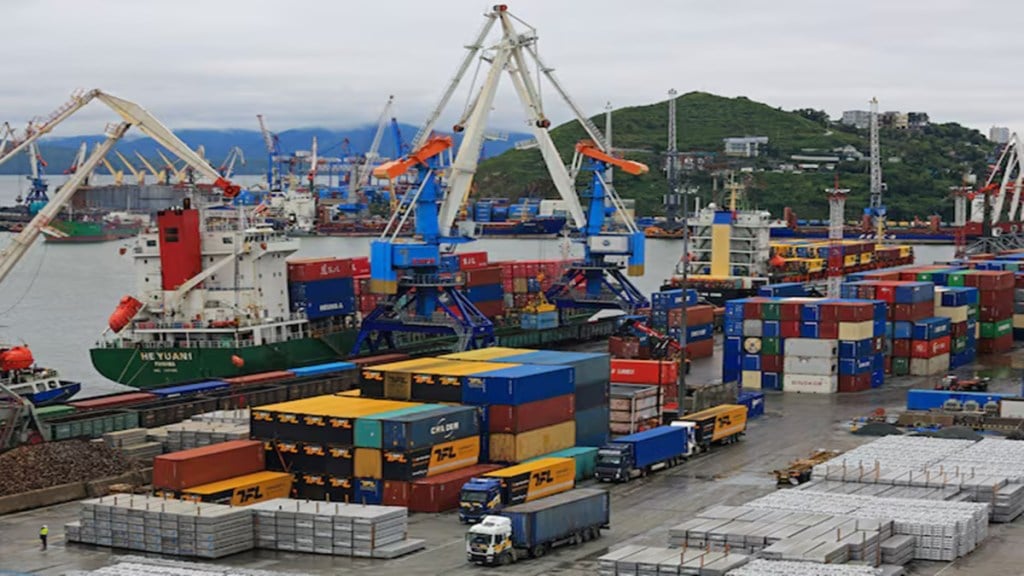If the rupee’s average exchange value stays around the current level for over a year, India’s aggregate import bill could rise by $15 billion, ceteris paribus. However, in the near term, low oil prices will largely offset the rupee impact on cost of energy imports.
A weak currency will inflate the import prices of two key agricultural commodities – edible oil and pulses. A spike in cost of imported fertilisers like urea and DAP could have adverse fiscal implications.
Analysts said if the depreciation of the local currency continues unabated, it would make electronic items such as smartphones costlier, with higher impact on entry-level products. Currently, smartphones assembled in India have 80–90% import content.
However, the most significant effect of the rupee’s fall will be on India’s $100 billion-worth industrial goods imports from China. “Since both the rupee and yuan have weakened against the US dollar, the resultant high cost could further strain trade balance,” noted Ajay Srivastava, founder of Delhi-based trade research firm, GTRI.
The rupee ended at 85.26 to the dollar on Wednesday, the third straight session where it plunged to record lows.
“The cost of imports of oil & gas will increase with a weakening rupee. However, with the decline in oil prices to $70-75 per barrel now, the impact of weakening rupee would be offset,” said Girishkumar Kadam, senior vice president & group head- corporate ratings at Icra. He added that oil import bill is likely to be lower in FY25 against FY24 in rupee terms.
The country’s net oil and gas import bill stood at $89.0 billion during April-November of the current fiscal year, against $79.6 billion in the same period of last fiscal. In FY24, the net oil and gas imports had touched $121.9 billion.
Moreover, the weakening of the rupee should have a limited impact on the country’s negotiations and pricing with oil-exporting countries as most of the trade happens in dollar terms, analysts say. Icra expects the $/rupee pair to trade between 85 and 86 in the near term.
The country also is major importer of coal, given the need to run thermal power plants at plant load factors. There are units run specifically on imported-coal. It is estimated that for every 1 rupee change in the exchange rate, the cost of generation for imported coal-based power projects is expected to vary by 4 paise per unit.
“Given that coal-based generation accounts for about 75% of the all India electricity generation and as coal imports constitute about 7-7.5% of overall coal consumption by the power sector in India, this is expected to translate into a low impact of 0.3 paise per unit of power sold by the discoms at all India level,” Kadam said.
“The rupee’s depreciation can increase the pricing in the sub-Rs 10,000 smartphone segment as the margins are less there and it is difficult to absorb costs. A 5% currency depreciation can lead to around 2% increase in costs,” said Faisal Kawoosa, chief analyst at Techarc. Tarun Pathak, research director at Counterpoint India said, “Though the cost of components will increase for companies, there are multiple factors such as cyclical nature of pricing of certain components, hedging by companies, etc, that may not burden them much with cost increase at the moment. Of course, a weak rupee also boosts realisation from export of smart phones.
India meets 58% of edible oil consumption needs via imports, and 15-20% of pulses consumed in the country are imported. Malaysia, Indonesia, Ukraine, Russia, Canada, Australia, Myanmar, Mozambique and Malawi are from where the imports are carried out.
Trade sources said that in 2023-24 oil year (November-October), import value of edible oils – palm, soybean and sunflower — declined to $ 15.9 billion from $ 16.65 billion in 2022-23 on account of softening of global prices and reduction in imports volume. “A fall is value of rupee could mean that n import bill may not reduce this year as expected earlier on account of rise in domestic oilseeds production,” an industry official said.
However tn case of pulses, while imports surged to a record $ 3.75 billion in FY24 due to lower domestic production, fall in prices of rupee may not push up cost of imports significantly. This is because volume of imports may come down given the robust domestic crops.
Cost of imports of fertilizer is, however, likely to see a spike if rupee value declines further, especially for DAP and Potash, whose demand is largely met through imports. The rise in cost of imports of fertilisers is further impacted by Red Sea crisis since the beginning of the year, as ships are rerouted and take an additional 6500 km through the cape of Good Hope, South Africa thus taking an additional 14-45 days for the consignment to reach Kandla port.
While the country is entirely dependent on imports for potash supplies which is crucial for the growth of horticultural crops, two thirds of around 11 MT of DAP consumption annually is shipped from Russia, Morocco, Saudi Arabia, Jordan, Egypt and China. Revised estimate for fertiliser subsidy is Rs 1.88 trillion in FY24. In terms of volume, imports account for a third of domestic soil nutrients consumption of around 60 MT annually.
(With inputs from Mukesh Jagota).

